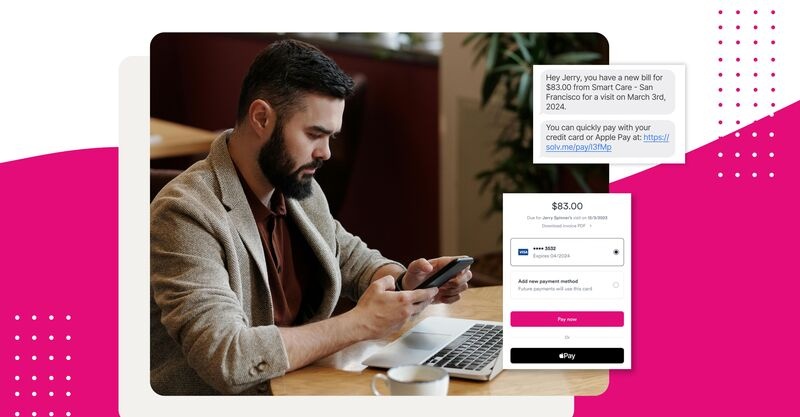Beginning in the 1980s, the urgent care industry started something revolutionary—it put the consumer at the center of healthcare, delivering high quality care that is more convenient and more affordable for patients. Since then, the urgent care industry led the way in healthcare innovation—it was the first to build a front door on the internet through online scheduling. It also was ahead of the curve on virtual care, recognizing the importance of anywhere access to medicine long before the pandemic. It’s one of the few areas of healthcare where we can find providers proactively publishing self pay pricing so the under and uninsured can access care without fear. The urgent care category is synonymous with being patient-first, and that ethos has turned it into a massive category—in 2020, it was estimated that there were more than 150 million urgent care visits in the US.
If there was any doubt about urgent care’s innovation and impact on the country, the pandemic proved it. The speed and agility witnessed in March of 2020 was remarkable when overnight urgent care centers transformed into virtual clinics and reopened just a few months later with a fully digitized patient experience and COVID testing. Urgent care providers are the unsung heroes of COVID, having collectively treated more patients and delivered more tests than the pharmacies and popups that dominated news cycles. During the height of the pandemic, urgent care set the bar for around the clock access to care in every community across the country.
When we started Solv, urgent care’s edge in delivering consumer-focused care was why we admired and chose to invest in the success of this industry, and that’s why we are doubling down today.
As we look toward the future of urgent care, we’re noticing emerging trends that present challenges and opportunities. More and more healthcare and technology upstarts have recognized what urgent care operators have known for decades: delivering consumer-focused care allows you to simultaneously improve access to care, impact more lives, and grow a successful practice. If you zoom out, you can see a broader consumer-focused healthcare category emerging, the Consumer-First Care Industry. It includes telehealth prescription services like Ro, Hims and Nurx who create a seamless experience around a chief complaint, from the medical visit to the labs to the prescription, increasing access and clarifying prices along the way. Others, including Amazon and LabCorp, have begun to operationalize at-home care, bringing the service to the patient. Established primary care groups like One Medical have gone public, increasing convenience and benefitting from member subscriptions that allow continuous reinvestment in their long-term relationship with patients. Nearly 80% of their patient encounters now happen digitally through emails and telemedicine. All these models—online chat, virtual care, urgent care, wellness checks, and more are converging, blurring the lines between urgent care and everything else. The field is getting more crowded. And the winners will be those that relentlessly increase the accessibility and affordability of healthcare, period.
So where does this broader and increasingly crowded Consumer-First Care category leave urgent care as we look forward to the next decade?
Our viewpoint is clear. This is the moment for urgent care to become the providers of the future. Urgent care was built on meeting consumer needs, and although consumer needs are rapidly changing, urgent care operators are best positioned to deliver. They have proven the flexibility to adapt and grow, a highly efficient model for delivering same-day care and are connected deeply to their local communities.
That is why today, we are announcing Solv’s pledge to the urgent care industry:
Solv will help grow consumer access and patient volume in urgent care 25% by 2025.
We’ll achieve this goal by partnering with urgent care innovators to build consumer experiences that bring more patients to the urgent care industry in three main ways:
1. Local-virtual access to care
One important shift in recent years is how patients are choosing to engage with healthcare—right now, conveniently, and on their terms. Virtual and asynchronous care options have provided consumers with more access points, and in some cases increased engagement with healthcare by reducing friction down to zero. However, one overlooked aspect of digitized and telemed-based healthcare is that no comprehensive, long-term relationship with a patient can exist solely over the internet. That’s not medicine and it’s not what patients want either.
At Solv, we see the future as a local-virtual version of healthcare, where in-person urgent care clinics leverage lightweight virtual services, tools and partnerships to be the in-person complement to a digital visit, or to simply give patients increased access after hours or on-the-go. Local-virtual technologies will not only increase engagement with urgent care, they’ll give providers more flexibility to work on their own terms, choosing where patient volume comes from, how to best utilize clinical resources, and unlock new streams of revenue. Digital care powered by a network of local providers across the US will keep urgent care centers competitive in the emerging Consumer-First Care industry, while bringing more millennials and digital-savvy patients into physical clinics.
2. Cost certainty
The second emerging trend is price certainty -- if there is one issue that nearly every patient can agrees on, it’s that they feel outraged and wronged by the cost of the American healthcare system. Surprise billing events are covered by local and national media weekly. With 80% of consumers with high deductible commercial health plans not hitting those deductibles, the rise of a cost conscious patient is real. And increasingly many are asking for the option to pay cash for more of their healthcare needs when it is more affordable than the negotiated rate of their insurance plan.
Solv will enable urgent care innovators to publish their self-pay pricing and meet the needs of the increasingly price savvy, cost conscious consumer. We’re seeing large and leading groups like FastMed and Carbon Health lean into cash-pay price transparency as a way of meeting cost conscious patients and improving satisfaction. Nearly every upstart in the Consumer-First Care category launches direct to consumer with clear, upfront pricing. We’re excited to work carefully with forward-looking providers to deliver peace of mind for patients and reduce surprise medical bills. We’ve talked to many of you and know this problem is hard, but if executed thoughtfully, it will delight patients and make urgent care the go-to-resource for millions of patients who have come to demand certainty and predictability for the cost of their care.
3. More access, convenience and experiences through technology
Technology does not deliver care, full stop. But technology is an enabler of access, convenience and new services which urgent care operators will need to take advantage of in an increasingly competitive Consumer-First Care world. Billions of dollars in capital have been poured into digital-only healthcare companies, and they’ve launched impressive products that transform how patients experience and receive care. What some underestimate is that these new entrants are shifting the consumer expectation for what a modern, convenient, high quality healthcare experience should be.
We will continue to make aggressive investments to enable urgent care operators to integrate new experiences that enable you to grow your business. For example, in our partnership with PM Pediatrics, we’ve built an integration with their EHR eCW and enabled a patient integration with Cognoa enabling an expansion of services into mental health. With Urgent Team, we’ve used robotic automations to create a fully digital registration process that eliminates data entry for staff and passes information to their EHR. We will continue to invest in direct API integrations and workflow automations with all EHRs in the urgent care space to ensure maximum flexibility and agility for urgent care operators to grow patient volume, expand services and thrive in this Consumer-First Care world.
At Solv, we’ve formed a team with deep roots in consumer technology, big data and integrations along with former operators and experts from urgent care. We will use our understanding of the consumer to give urgent care innovators a delightful consumer front end that’s competitive with new Consumer-First Care entrants, while partnering with all EHRs to bring healthcare technology into the future.
With this pledge, Solv is committing to continue our deep investment in the urgent care industry, helping innovative providers build unique, compelling long-term assets in this fast changing Consumer-First landscape.
We welcome your ideas, feedback, questions and critique as we take on this ambitious goal. Onward!


 Twitter
Twitter LinkedIn
LinkedIn

